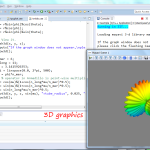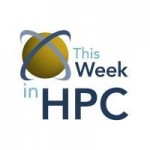Over at OH TECH, Jamie Able writes that students leveraged the Ohio State Supercomputing Center to achieve an international land speed record.
Archives for August 2014
Video: What Linux Can Learn from Solaris Performance, and Vice-Versa
“How does Linux system performance compare to other OSes, particularly the performance-focused Solaris family? What features inspired by them could be added to Linux? Both are bristling with performance features and optimizations, and it’s difficult enough to fully understand the performance of the Linux kernel and its distributions, let alone other kernels and OSes for comparison. Brendan Gregg has unique insight into the performance features and analysis capabilities of both Linux and Solaris-based systems, which he covers in depth in his new book: Systems Performance: Enterprise and the Cloud.”
Job of the Week: Storage Engineer at Cray
Cray in St. Paul, MN is seeking a Storage Engineer in our Job of the Week.
Inspiring Women for STEM Careers
Over at DataCenter Dynamics, Jill King from Adaptive Computing writes that women are severely underrepresented in STEM professions: In fact, only about a quarter of workers in STEM fields were women as recently as 2011. To begin to address this issue, King reached out to three colleagues in the HPC industry to ask about their experiences.
Intel Rolls Out First 8-Core Desktop Processor
Today Intel unveiled its first eight-core desktop processor, the Intel Core i7-5960X processor Extreme Edition, formerly code-named “Haswell-E,” targeted at power users who demand the most from their PCs.
Announcing the Ceemple Tool for C++ Technical Computing
Programmers have a new tool for technical computing in Windows. Ceemple is an innovative solution enabling rapid C++ based scientific computing.
Accelerating CFD with PyFr on GPUs
Over at TechEnablement, Dr. Peter Vincent writes that PyFR is an open-source 5,000 line Python based framework for solving fluid-flow problems that can exploit many-core computing hardware such as GPUs.
Why Cray is Backing Lustre and OpenSFS
“At Cray, we are a big user and investor in Lustre. Because Lustre is such a great fit for HPC, we deploy it with almost all of our systems. We even sell and deliver Lustre storage independent of Cray compute systems. But Lustre is not (yet) the perfect solution for distributed and parallel-I/O, so Cray invests a lot of time and resources into improving, testing, and honing it. We collaborate with the open-source Lustre community on those enhancements and development. In fact, Cray is a leader in the Lustre community through our involvement in OpenSFS.”
This Week in HPC: Cray Creates GPU Heavy Server Node and New Exascale Recommendations for the DOE
In this episode of This Week in HPC, Michael Feldman and Addison Snell from Intersect360 Research discuss the new Cray CS-Storm supercomputer based on Nvidia GPUs. After that, the discussion turns to exascale investment recommendations coming out of a new report from a Department of Energy Task Force.
Video: Preparing Your Application for Advanced Manycore Architectures
“Confronting power limitations and the high cost of data movement, new supercomputing architectures within the DOE are requiring users make changes to application codes to achieve high performance. More specifically, users will need to exploit greater on-node parallelism and longer vector units, and restructure code to take advantage of memory locality. In this presentation you will learn about coming architectural trends and what you can do now to start preparing your application.”












